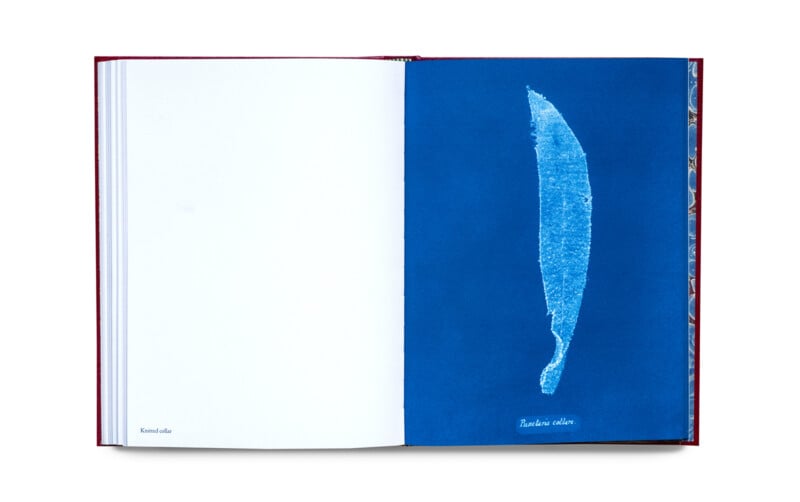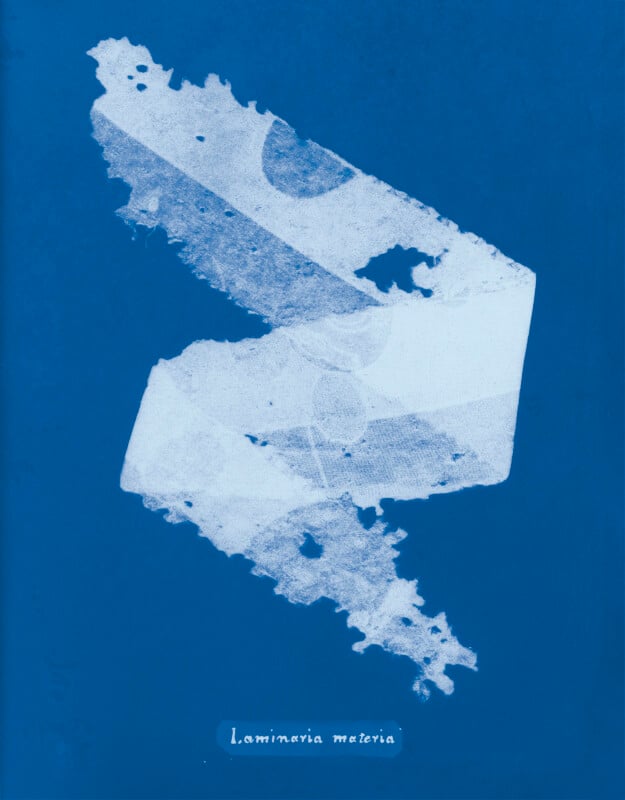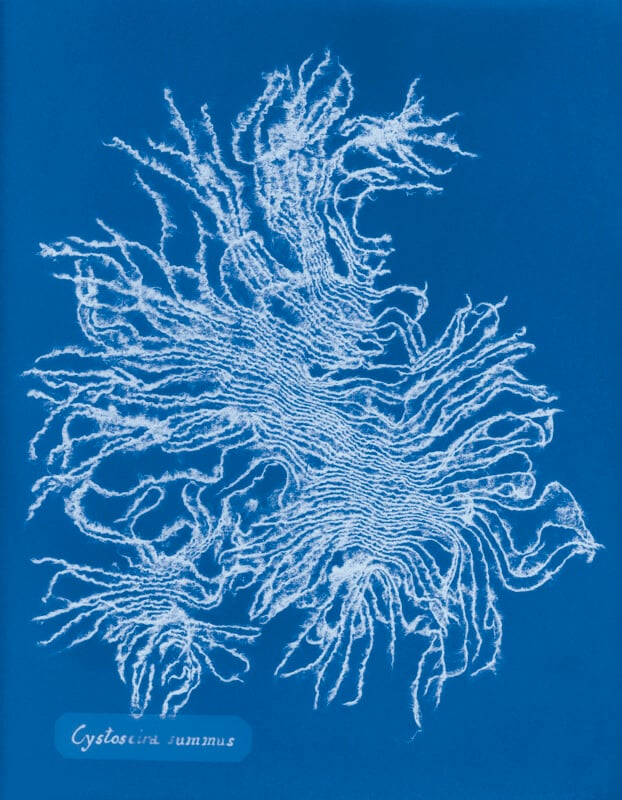Photographer Turns Trash Into Cyanotype Treasure to Save the Oceans
Award-winning British photographer Mandy Barker literally turns trash into treasure with her historically inspired fine art cyanotype images comparing marine algae to clothing waste.
With Photographs of British Algae: Cyanotype Imperfections, Mandy Barker raises awareness of fast fashion, synthetic clothes, and the harmful effect of microfibers in the ocean.
This is not Barker’s first foray into documenting pollution in the world’s oceans. Her work photographing plastic debris has been globally recognized and published by National Geographic, TIME, The Guardian, Smithsonian, New Scientist, UNESCO, British Journal of Photography, and many more, as well as exhibitions at MoMA and the United Nations headquarters, New York: V&A Museum, London, and the Science & Technology Park, Hong Kong.
A decade in the making, Barker collected over 200 specimens of clothing waste from 121 beaches from northern John O’Groats in Scotland all the way to Land’s End in the South of England for her latest project.
“Items ranging from jackets to dressing-up outfits, wigs and trainers, football shirts to underwear, were salvaged from beaches, rockpools and directly from the sea. The items were representative of millions of tonnes of clothes manufactured and discarded each year—sometimes without being worn at all. Every year, the fashion industry is responsible for more greenhouse gas emissions than all international flights and container ships combined,” says Barker
The work is a nod to famed botanist and photographer Anna Atkins (1799-1871) believed to be the first woman to create a photograph and first person to publish a book illustrated with photographic images. Atkins created cyanotype photograms contact printed by placing unmounted dried algae directly onto cyanotype paper. The seaweed, placed on slow-reacting light sensitized paper and exposed to the sun would then produce an image. Atkin’s first collection, Photographs of British Algae: Cyanotype Impressions, was self-published in October 1843 with her own handwritten text.
This work inspired Mandy Barker to create her modern take on the cyanotype process.

April 2025 by GOST Books







“In 2012, I found a piece of material in a rock pool that changed my life. Mistaking this moving piece of cloth for seaweed, started the recovery of synthetic clothing from around the coastline of Britain for the next ten years,” Barker says.
In a video interview with New Scientist, Barker explained, “I then came across the work of Anna Atkins, who was a Victorian botanist from the 1800s. And what she did was collect seaweed from the coast of Britain and she pressed them and made these beautiful cyanotype prints. A lot of the images seem to look to me like pieces of clothing, the fronds of seaweed, things like that look like the fibers of say a pair of trousers or pieces I’ve found. And that’s when I had the idea to instead of using seaweed as she did, use the recovered pieces of clothing that I’d found and raise awareness for this current issue.”
Each take on a specimen illustrated in the book is a photogram of a clothing fragment created using the cyanotype process. The detailed Prussian blueprints, like Anna Atkins’ specimens of algae, combine art and science.
Barker’s approach coincides with the 180th anniversary of Atkin’s first book, with all 202 illustrations carefully replicated with found garments or fibers substituted for the original botanical specimens.
“I see this book as a discussion point, a call to action, and by publishing the work to circulate and share will reach a wider audience. Whether it ends up on a coffee table, bookshelf, or with someone with the power to implement change, it is my intention that conversation around Photographs of British Algae: Cyanotype Imperfections will lead to action and a shift within the fashion industry, with the aim of achieving an impact that will go on to change the world,” Barker says.
Photographs of British Algae: Cyanotype Imperfections is available in standard hardback for $65 or signed editions for $75.
Image credits: Photographs of British Algae: Cyanotype Imperfections by Mandy Barker published in April 2025 by GOST Books